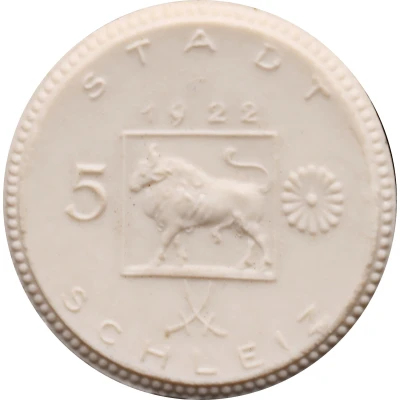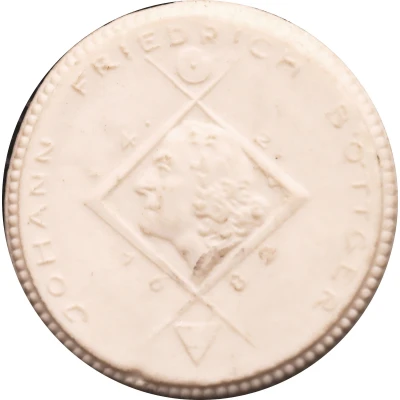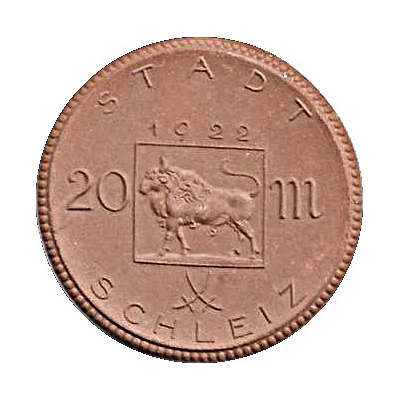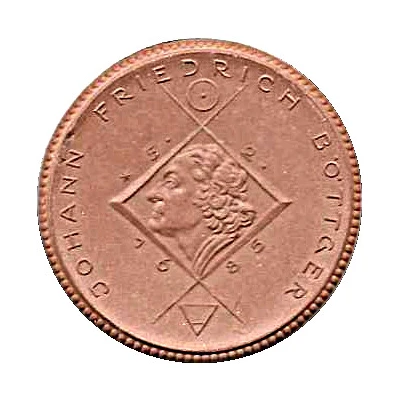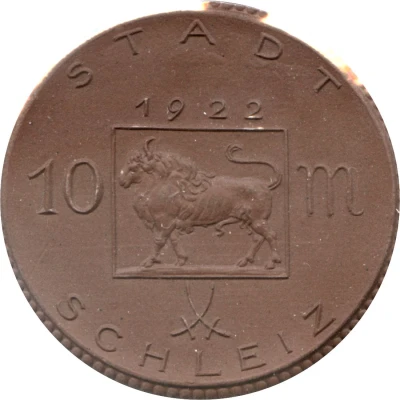
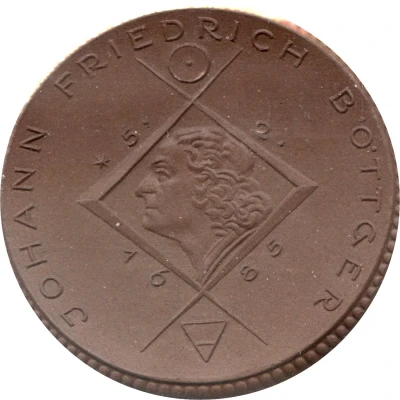

© tolnomur (CC BY-NC-SA)
10 Mark - Schleiz
1922 year| Porcelain (brown) | 7.8 g | 37 mm |
| Issuer | City of Schleiz (Thuringia) (Federal state of Thuringia) |
|---|---|
| Period | Weimar Republic (1918-1933) |
| Type | Standard circulation coin |
| Year | 1922 |
| Value | 10 Mark |
| Currency | Mark (1914-1924) |
| Composition | Porcelain (brown) |
| Weight | 7.8 g |
| Diameter | 37 mm |
| Shape | Round |
| Technique | Milled |
| Orientation | Medal alignment ↑↑ |
| Demonetized | Yes |
| Updated | 2024-10-04 |
| Numista | N#129754 |
|---|---|
| Rarity index | 85% |
Reverse
Pearl rim, name surrounding left facing image of Johann Friedrich Böttger in solid line diamond
Script: Latin
Lettering:
JOHANN FRIEDRICH BÖTTGER
* 5. 2.
16 85
Comment
Johann Friedrich Böttger; a German alchemist. He was born in Schleiz and is normally credited with being the first European to discover the secret of the creation of porcelainThe coin was minted by Staatlichen Porzellan-Manufaktur Meissen
Interesting fact
One interesting fact about the 10 Mark coin from Schleiz, Thuringia, is that it was made of porcelain, which is a unique material for coins. Porcelain is a type of ceramic material that is known for its durability and resistance to wear and tear, making it an unusual choice for a coin that was intended to be used in circulation. The use of porcelain for the coin's material may have been a deliberate choice to make the coin stand out or to commemorate a special occasion.
Price
| Date | Mintage | VG | F | VF | XF | AU | UNC |
|---|---|---|---|---|---|---|---|
| 1922 | 11000 | - | - | - | - | - | - |
Values in the table are based on evaluations by sales realized on Internet platforms. They serve as an indication only for 10 Mark - Schleiz 1922 coin.
